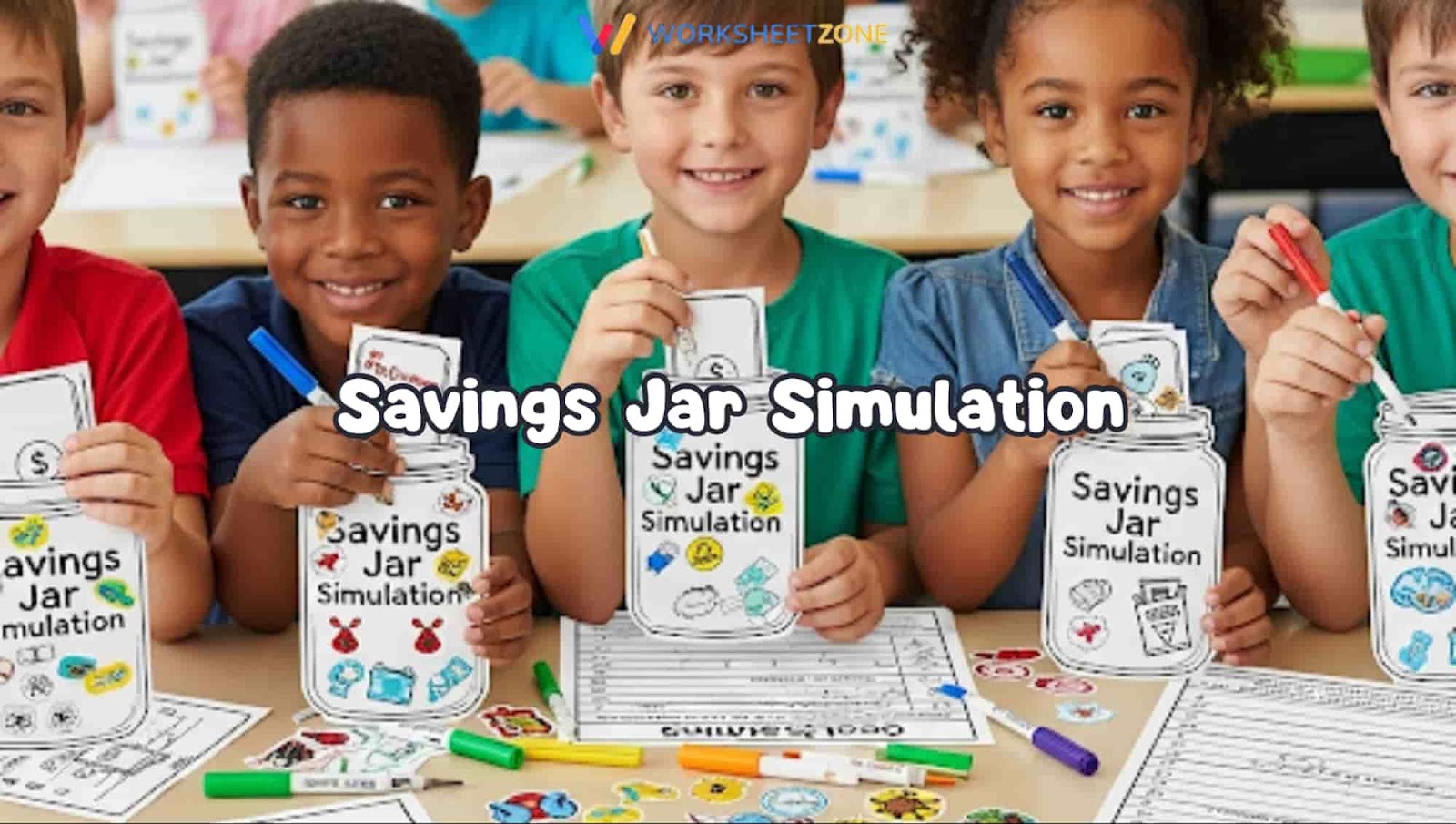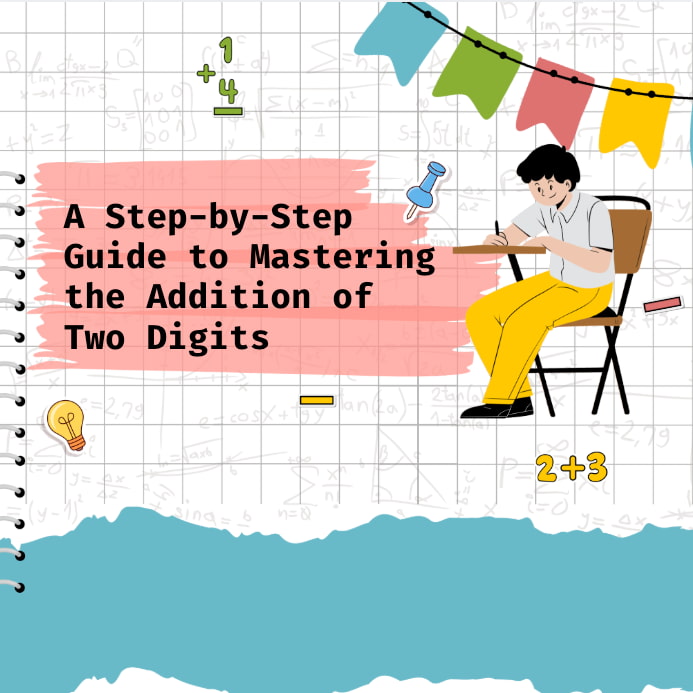Money activities for students are an effective way to teach real-world financial skills in a fun and engaging manner. These activities introduce important concepts like saving, budgeting, spending, and setting financial goals.
Through hands-on learning, students begin to understand how money works in everyday life. Teachers can use these lessons to spark discussions, encourage responsibility, and build a strong foundation for smart money management that students will carry into the future.
15 Engaging Money Activities for Students
Here are some creative and engaging money activities that will help your students build real-world financial skills through fun, hands-on learning experiences:
1. Classroom Market Day
One of the most engaging money-themed activities perfectly suited for students, this experience transforms your classroom into a buzzing marketplace where students take on the roles of buyers and sellers.
It’s an excellent way to simulate real-life financial interactions in a safe and controlled environment. Students learn to price goods, negotiate, calculate change, and most importantly, manage a budget. Market Day also helps build math, communication, and entrepreneurship skills.

Materials Needed:
- Play money or classroom currency
- Items for students to sell (handmade crafts, snacks, used books)
- Price tags and display materials
How to Do:
- Assign roles: some students are buyers, others are sellers.
- Give each student a fixed budget using play money.
- Allow time for browsing and transactions.
- Debrief with students: What did they buy? Did they stay within budget?
2. Budget a School Lunch
Through this practical budgeting activity, students take a closer look at daily expenses—starting with lunch. They explore how to make smart food choices within a set amount of money, balancing nutrition and cost.
The activity encourages them to think critically about value, affordability, and how to stretch limited resources, which are all essential components of financial literacy.

Materials Needed:
- Sample school lunch menus with prices
- Budget worksheets
- Calculators or tablets
How to Do:
- Provide students with a weekly lunch allowance (e.g., $20).
- Ask them to plan five school lunches that fit the budget.
- Have students reflect on their choices and adjust for savings or variety.
3. Savings Jar Simulation
The Savings Jar Simulation introduces the concept of delayed gratification. Students work toward a financial goal by making regular “deposits” into a savings jar. It allows them to visually track their progress over time and reinforces the value of consistency and patience.
This activity lays the foundation for understanding long-term financial planning and saving for the future.

Materials Needed:
- Printable savings jar sheets
- Stickers or markers
- Goal-setting worksheet
How to Do:
- Have students choose a savings goal and write it on their jar sheet.
- Set weekly “deposit” amounts based on pretend earnings.
- Color in sections of the jar each time they “save.”
- Discuss how long it takes to reach a goal.
4. Coin Identification Challenge
Perfect for younger students, this activity focuses on recognizing and differentiating coins. It also teaches them how different combinations of coins can add up to the same value.
By manipulating coins hands-on and solving coin puzzles, students improve their mental math, fine motor skills, and understanding of real-world money handling.

Materials Needed:
- Real or plastic coins
- Coin sorting trays
- Identifying coins worksheets
How to Do:
- Give students a mix of coins to sort and count.
- Create challenges, like “Make 75¢ using three coins” or “Match coins to their names.”
- Turn it into a team competition for engagement.
5. Wants vs. Needs Sorting Game
Students often struggle to separate wants from needs. As one of the most effective money activities for students, this game helps them distinguish between essential items (like food and shelter) and discretionary ones (like toys and video games).
It prompts important discussions about budgeting priorities and making responsible spending choices, laying the groundwork for smart money management in the future.

Materials Needed:
- Printed images of items (food, toys, clothes, gadgets)
- Two poster boards labeled “Wants” and “Needs”
- Velcro or tape
How to Do:
- Present students with different images.
- Ask them to place each under the correct category.
- Lead a discussion about why needs must come first.
6. Price Comparison Project
This research-based activity helps students become smarter shoppers by learning how to compare prices for the same item across different stores or platforms.
It highlights the importance of looking beyond brand loyalty and marketing to evaluate actual cost and value. Students gain confidence in conducting cost-benefit analyses and questioning financial decisions.

Materials Needed:
- Grocery store ads or printouts from online stores
- Price comparison worksheets
- Calculators
How to Do:
- Assign each student or group a product (e.g., cereal, sneakers).
- Have them compare prices from three different sources.
- Discuss how branding, quality, and quantity affect value.
7. Financial Literacy Board Game Day
Board games can make financial learning incredibly fun. Games like Monopoly or The Game of Life expose students to concepts like earning income, paying bills, encountering financial setbacks, and planning ahead.
Game Day encourages friendly competition while deepening understanding of money-related vocabulary and decision-making under pressure.

Materials Needed:
- Board games like “Monopoly,” “The Game of Life,” or custom classroom versions
- Game instruction sheets
- Game money
How to Do:
- Choose games suited to student age levels.
- Set up stations and rotate groups.
- Reflect on key lessons learned during gameplay.
8. Make Your Own Money
Designing their own currency allows students to explore what makes money secure, recognizable, and functional. They learn about anti-counterfeiting features and the cultural significance of symbols on money.
Plus, it’s a highly creative exercise that allows them to express individuality while understanding the components of currency systems.

Materials Needed:
- Blank paper or printable templates
- Colored pencils, markers
- Laminating materials (optional)
How to Do:
- Teach about currency features (symbols, serial numbers, portraits).
- Ask students to create a bill or coin design.
- Vote on a class currency to use for other money activities.
9. Plan a Vacation on a Budget
In this collaborative project, students research and plan a dream vacation while adhering to a budget. It gives them a real-world context for applying financial skills like cost estimation, prioritizing needs vs. wants, and making trade-offs.
They discover how quickly expenses add up and how planning is crucial to staying within limits.

Materials Needed:
- Internet access or travel brochures
- Budget planning sheets
- Calculators
How to Do:
- Assign a budget (e.g., $1,000 for a 3-day trip).
- Students plan travel, food, lodging, and activities.
- Present vacation plans to the class and explain choices.
10. Create a Classroom Bank
One of the long-term activities for students that transforms your classroom into a functioning economy where students earn money for good behavior or classroom jobs, manage savings accounts, and spend their earnings on rewards.
This activity helps them understand the value of work, how interest accumulates, and how to make responsible financial choices. Over time, students learn the consequences of spending versus saving in a realistic yet low-risk environment.

Materials Needed:
- Play money
- Banking log sheets
- Store for rewards
How to Do:
- Assign salaries for classroom jobs.
- Allow students to deposit into savings or spend on rewards.
- Introduce interest, taxes, or fines for realism.
11. Job Simulation Activity
By simulating different jobs and monthly salaries, students gain an understanding of adult responsibilities and the true cost of living. They budget for rent, groceries, transportation, and entertainment.
This activity offers insight into career decision-making and financial planning, helping them link education to future financial stability.

Materials Needed:
- Job description cards with salaries
- Budget sheets
- Household expense templates
How to Do:
- Assign students a job with a salary.
- Ask them to create a monthly budget (housing, food, entertainment).
- Discuss the challenge of making ends meet and saving.
12. Lemonade Stand Math
Running a pretend lemonade stand gives students a glimpse into small business management. They calculate ingredient costs, set prices, estimate profit margins, and adjust strategies to increase sales.
It fosters entrepreneurship and critical thinking, making it an excellent cross-curricular activity that ties together math, economics, and communication skills.

Materials Needed:
- Lemonade stand materials (real or pretend)
- Cost sheets (ingredients, cups)
- Sales tracking forms
How to Do:
- Set a cost per cup based on expenses.
- Choose a price and track sales and profits.
- Discuss what pricing strategies worked and why.
13. Shopping List on a Budget
This task simulates the real-life challenge of sticking to a budget while shopping. Students must prioritize, compare prices, and make choices that balance necessity and desire.
It enhances their ability to make informed spending decisions, and they experience firsthand how quickly small purchases can impact a limited budget.

Materials Needed:
- Printable store catalog or online listings
- Budget worksheet
- Scissors and glue (if using print materials)
How to Do:
- Provide students with a shopping list and budget (e.g., $25).
- Let them pick items and add up costs.
- Share how they prioritized certain items over others.
14. Weekly Expense Tracker
Tracking expenses, even pretend ones, helps students develop money mindfulness. By recording their daily purchases and calculating weekly totals, they begin to see where their “money” goes.
This habit builds awareness and introduces concepts like overspending, saving, and adjusting spending patterns to reach goals.

Materials Needed:
- Expense tracker templates
- Fake income and spending scenarios
- Pens or digital devices
How to Do:
- Give students a fictional weekly income.
- Have them track daily pretend expenses.
- At the end of the week, review total spending and savings.
15. Money Vocabulary Bingo
This game is one of the simplest money-themed classroom activities for students, reinforcing key financial terminology in a fun and engaging way. As students listen to definitions or real-life scenarios, they match them to the correct term on their bingo card.
This game is perfect for reviewing essential vocabulary such as “interest,” “debt,” “credit,” or “income,” making financial language both understandable and memorable through playful repetition.

Materials Needed:
- Bingo cards with money terms (e.g., interest, budget, savings)
- Markers or chips
- Word definition list
How to Do:
- Call out definitions or examples, not the word itself.
- Students cover the correct term on their cards.
- Reward winners with classroom currency or privileges.
Sum up
Money activities for students help turn financial education into practical, memorable experiences. These lessons teach students how to make informed decisions, understand the value of money, and take responsibility for their financial choices.
By using creative and relatable scenarios, teachers can build lasting money skills that go beyond the classroom. With early exposure to these concepts, students are more likely to develop healthy financial habits that benefit them throughout life.
For additional practice, you can explore money math worksheets to reinforce concepts like counting coins, making change, and solving real-world budgeting problems in a structured, skill-building format.







